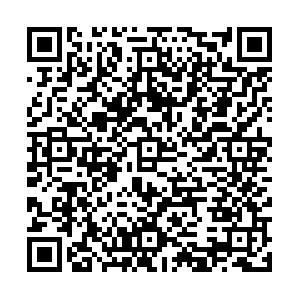Analysis on awareness of birth defects prevention knowledge among 0-6 years old children's parents in Shenzhen City
-
摘要: 目的 了解深圳市0~6岁儿童家长出生缺陷防治知识知晓情况,为制定针对性的出生缺陷防治健康教育策略提供参考。方法 统一设计出生缺陷防治知识知晓情况流行病学调查表,医疗保健机构采用方便抽样选择调查对象,幼儿园以班级为单位,采用整群随机抽样方法选择调查对象,获得调查样本5 147例。结果 出生缺陷防治知识知晓率为80.4%(4 139/5 147),≤25岁的年轻家长出生缺陷防治知识知晓率最低为69.0%(629/911);多因素分析显示,母亲年龄组、户籍及文化程度是0~6岁家长出生缺陷知晓的影响因素。知晓组和不知晓组婚前检查(χ2=220.945,P<0.001)、孕前检查(χ2=141.297,P<0.001)及产前检查行为(χ2=111.586,P<0.001)之间的差异均有统计学意义。结论 ≤25岁的年轻家长、文化程度低、外来流动人群是出生缺陷防治知识健康教育的主要对象,应予以重点关注。Abstract: Objective To study the awareness of birth defects prevention knowledge among 0-6 years old children's parents, in order to provide reference for health education strategies about birth defects prevention. Methods Uniform designed epidemiologic questionnaire of prevention knowledge about birth defects was adopted. Convenience samplingand cluster random sampling method was employed for medical and health institutions and kindergarten class as unit, respectively. A total of 5 147 cases were identified. Results Awareness rate of birth defects prevention knowledge among population was 80.4% (4 139/5 147), of which young parents in age group ≤ 25-years old was the lowest(629/911,69.0%). Multivariable analysis showed maternal age group, household register and educational degree were influential factors of awareness about birth defects prevention konwledge. Statistically significant difference was found among premarital examination (χ2= 220.945, P<0.001), pregnancy check (χ2=141.297, P<0.001) and prenatal care (χ2=111.586, P<0.001) between awareness group and not awareness group. Conclusions Young parents in age group ≤ 25-years old, population of low educational degree and migrants were the key objects of birth defects prevention knowledge health education, they should be focused on.
-
Key words:
- Congenital abnormalities /
- Universal precautions /
- Epidemiologic studies
-
罗家有. 我国出生缺陷干预的现状与发展趋势 [J]. 实用预防医学, 2005,12(2):458-460. 李智文,任爱国,张乐,等. 中国2003年出生缺陷高发区和低发区重大体表畸形患病率监测 [J]. 中华流行病学杂志, 2005,26(4):252-257. 任爱国. 美国一基金会发布全球出生缺陷报告 [J]. 中国生育健康杂志, 2006,17(2):121-122. 张维庆. 中华人民共和国人口与计划生育法释义 [M]. 北京:法律出版社, 2002:103. 凌寒. 卫生部发布《中国出生缺陷防治报告(2012)》 [J]. 中国当代医学, 2012,19(28):1. Mai CT, Kirby RS, Correa A, et al. Public health practice of population-based birth defects surveillance programs in the united states [J]. J Public Health Management Pract, 2015,[Epub ahead of print]. 毛萌,朱军. 出生缺陷监测研究现状 [J]. 实用儿科临床杂志, 2009,24(11):801-803. 黄广文,杜其云,刘智昱. 出生缺陷儿母亲心理健康状况调查研究 [J]. 中华疾病控制杂志, 2012,16(2):124-126. 李同博,刘宇峰,陈麒,等. 出生缺陷干预的相关法律探析 [J]. 医学与哲学, 2014,35(2B):62-63,88. 许碧云,崔晓宁,姚敬,等. 南京市鼓楼区孕妇出生缺陷相关知识知晓情况调查与分析 [J]. 东南大学学报(医学版), 2010,29(5):524-527. 冯家映,崔雅苓. 出生缺陷的调查分析与孕妇生育期健康知识教育 [J]. 医学理论与实践, 2007,20(3):332-334. 秦蕴石,景枫,张卫阳,等. 无锡市孕产妇出生缺陷知识、行为及预防服务的利用 [J]. 中国计划生育学杂志, 2007,15(5):275-277. 钟春琍,田艳,杨元,等. 贵州省农村育龄夫妇预防出生缺陷知识、态度、行为的现状及需求调查 [J]. 中国计划生育学杂志, 2010,4(175):221-223. 贝伟红,戚小兵,伍平,等. 珠海市2011-2013年围产儿出生缺陷监测结果分析 [J]. 华中科技大学学报(医学版), 2014,43(6):711-714. Reefhuis J, Honein MA. Maternal age and non-chromosomal birth defects, Atlanta--1968-2000: teenager or thirty-something, who is at risk? [J]. Birth Defects Res A Clin Mol Teratol, 2004,70(9):572-579. Lawal TA, Yusuf OB, Fatiregun AA. Knowledge of birth defects among nursing mothers in a developing country [J]. Afr Health Sci, 2015,15(1):180-187. 许碧云,胡娅莉,崔晓宁,等. 南京市社区预防出生缺陷健康教育的效果评价 [J]. 中华疾病控制杂志, 2012,16(10):846-849. 孙耀君,李汉金,肖敏,等. 福田区育龄夫妇生育健康知识调查 [J]. 中国生育健康杂志, 2007,18(1):28-29. 李佩珍,卢祖洵,杨艳芳. 吕梁地区育龄妇女对出生缺陷相关的知识、态度、行为的调查 [J]. 山西医科大学学报, 2005,36(2):180-182. -

 点击查看大图
点击查看大图
计量
- 文章访问数: 281
- HTML全文浏览量: 51
- PDF下载量: 114
- 被引次数: 0



 下载:
下载: